
The Western Hartebeest Antelope is a type of antelope that is found in Africa. They are one of the largest antelopes in the world. They are also known for their unique horns.
What is The Physical Description Of Western Hartebeest Antelope?
The Western Hartebeest antelope is a large mammal with a slender and robust body. It stands at around 120 to 150 centimeters (47 to 59 inches) tall at the shoulder and measures approximately 180 to 230 centimeters (71 to 91 inches) in length. They typically weigh between 120 and 200 kilograms (265 to 440 pounds).
This antelope species has a distinctive appearance characterized by a long and narrow face, which tapers into a pointed muzzle. The horns of the Western Hartebeest are unique and curved, with a base that forms a pronounced “S” shape. The horns can measure up to 70 centimeters (28 inches) in length.
The coat of the Western Hartebeest is short and coarse, featuring a sandy or reddish-brown coloration on the upper body, which blends into a lighter color on the underparts. They possess a prominent white patch on their rump, which acts as a visual signal to other members of their species.
Overall, the Western Hartebeest antelope has an elegant yet robust build, adapted for swift running across its grassland habitats.
Where Does The Western Hartebeest Antelope Live?

The Western Hartebeest antelope (Alcelaphus buselaphus major) is native to several countries in sub-Saharan Africa. Its range includes regions such as Senegal, Gambia, Guinea-Bissau, Guinea, Sierra Leone, Liberia, Ivory Coast, Ghana, Togo, Benin, Nigeria, Cameroon, Niger, Burkina Faso, Mali, and Chad.
Within these countries, the Western Hartebeest primarily inhabits open grasslands, savannas, and woodland areas. They are adapted to thrive in a variety of habitats, including both wet and dry environments. These antelopes are particularly well-suited to areas with tall grasses, as their long-legged and swift-running nature allows them to navigate and forage effectively in such environments.
How Long Does A Western Hartebeest Antelope Live?
The average lifespan of a Western Hartebeest antelope in the wild is typically around 10 to 15 years. However, in captivity or under ideal conditions with proper management, they can live up to 20 years or slightly longer. Various factors can influence their lifespan, including predation, habitat conditions, disease, and availability of food and water resources.
Western Hartebeest Antelope Communication And Perception
The Western Hartebeest antelope employs various forms of communication and perception to interact with its environment and other members of its species. Here are some key aspects:
-
Visual Communication: Visual signals play a crucial role in communication among Western Hartebeest. They have a distinct white patch on their rump, which acts as a visual marker during group movements, allowing individuals to maintain cohesion and follow one another.
-
Vocalizations: Western Hartebeest utilize a range of vocalizations to convey different messages. These vocalizations include snorts, grunts, and bellows, which are used to communicate alarm, aggression, or reproductive intentions. Vocal signals help maintain contact between individuals within a herd and may also serve to establish dominance or territory.
-
Scent Marking: Scent communication is vital for Western Hartebeest. They possess specialized glands on their faces, legs, and hooves that secrete scent markers. By depositing these markings on vegetation or the ground, they communicate territorial boundaries, reproductive status, and individual identity to other hartebeest in the area.
-
Body Postures and Movements: Western Hartebeest employ various body postures and movements to communicate intentions and establish dominance. This includes erecting their manes, lowering their heads, and engaging in head-tossing displays during interactions with other individuals.
-
Visual Perception: Western Hartebeest have well-developed eyesight, allowing them to detect movement and potential threats from a distance. Their eyes are positioned on the sides of their heads, providing a broad field of view and enhancing their peripheral vision.
-
Auditory Perception: Western Hartebeest have acute hearing, which helps them detect vocalizations and other sounds from both predators and other members of their herd. They can recognize specific alarm calls and respond accordingly to potential dangers.
Overall, the Western Hartebeest antelope relies on a combination of visual, vocal, olfactory, and behavioral cues to communicate and perceive their environment, ensuring social cohesion and survival in their habitat.
Habitat
The Western Hartebeest antelope (Alcelaphus buselaphus major) inhabits various types of habitats within its range in sub-Saharan Africa. These habitats include:
Grasslands: Western Hartebeests are well adapted to open grassland habitats, particularly those with tall grasses. They are often found in areas with a mix of short grasses and taller, more nutritious grasses that provide them with ample grazing opportunities.
Savannas: They also occupy savanna ecosystems, which are characterized by a mix of grassland and scattered trees. Savannas offer a balance of open spaces for grazing and cover for protection from predators.
Woodlands: Western Hartebeests can be found in woodland areas, which are characterized by a higher density of trees and shrubs compared to open grasslands. Woodlands provide shade, browse, and cover from predators, complementing their grazing activities.
Floodplains: In some regions, Western Hartebeests inhabit floodplain areas, where they benefit from the nutrient-rich grasses that grow after seasonal flooding. These habitats provide temporary water sources and abundant forage during certain times of the year.
Wetlands: They are known to utilize wetland areas, including marshes, swamps, and areas near rivers and lakes. These habitats provide access to water, as well as a diverse range of vegetation for grazing.
Diet
The Western Hartebeest antelope is primarily a grazer, meaning its diet consists mainly of grasses. They are highly adapted to feed on various species of grasses found in their habitats. Their specialized dental and digestive systems allow them to efficiently process and extract nutrients from grass.
In addition to grass, Western Hartebeests may also consume other herbaceous vegetation such as herbs, forbs, and leaves from shrubs and low-lying plants. During the dry season or in areas with limited vegetation, they can adapt their diet to include browse and even dry, coarse grasses.
Their feeding behavior involves moving in small herds or larger aggregations, systematically grazing on available vegetation. They have a selective feeding strategy, targeting the more nutritious parts of grasses and plants, such as young shoots and tender leaves.
The Western Hartebeest’s ability to extract nutrients from fibrous grasses allows them to thrive in grassland habitats, where they play an important ecological role as grazers. By consuming grasses, they help maintain vegetation structure, control plant growth, and influence the composition of plant communities in their ecosystem.
Reproduction
The Western Hartebeest antelope has a polygynous mating system, where a dominant male mates with multiple females. During the breeding season, which typically occurs during the rainy season, males engage in territorial displays and aggressive behaviors to establish and defend their territories.
When a male successfully attracts a female, they engage in courtship rituals that involve displays of dominance and courtship postures. Once mating occurs, the gestation period of the Western Hartebeest is around eight to nine months.
After the gestation period, a single calf is usually born, although twins can occur in rare cases. The female will find a secluded spot to give birth and then bond with her newborn calf. The calf is precocial, meaning it is relatively developed at birth and able to stand and walk shortly after. The mother will nurse the calf and provide care and protection.
The calf remains with its mother for several months, gradually transitioning to consuming solid food while still nursing. Eventually, the young hartebeest will become independent and join juvenile groups or bachelor herds. Sexual maturity is usually reached at around two to three years of age.
The Western Hartebeest follows a general reproductive pattern common among antelopes, with a relatively long gestation period and the birth of a single calf.
Conservation
The Western Hartebeest Antelope is listed as a threatened species by the IUCN. The main threats to the Western Hartebeest Antelope are poaching for their horns, habitat loss, and fragmentation of their range.
The IUCN has developed a conservation plan for the Western Hartebeest Antelope that includes protecting their habitat, controlling poaching, and educating the public about the importance of the Western Hartebeest Antelope.
What is the benefit of the Western Hartebeest Antelope to the ecosystem?

The Western Hartebeest antelope (Alcelaphus buselaphus major) plays an important role in the ecosystems it inhabits. Here are some benefits it provides:
-
Grazing and Vegetation Control: As a herbivorous grazer, the Western Hartebeest helps regulate vegetation in its habitat. By consuming grasses and other herbaceous plants, they help control plant growth, prevent overgrowth, and maintain a diverse vegetation structure. This influences the composition of plant communities and promotes the growth of more nutritious and palatable vegetation for other herbivores.
-
Nutrient Cycling: Western Hartebeests contribute to nutrient cycling in the ecosystem. Through their consumption of vegetation, they extract nutrients from plants, and through their dung and urine, they return these nutrients back to the soil. This enhances soil fertility and nutrient availability, benefiting the growth of vegetation and supporting other plant and animal species.
-
Prey for Predators: Western Hartebeests serve as a valuable prey species for large carnivores in their ecosystems. Their presence provides a food source for predators such as lions, leopards, hyenas, and African wild dogs, contributing to the ecological balance and functioning of the predator-prey dynamics.
-
Seed Dispersal: Western Hartebeests can aid in seed dispersal. As they move and feed across their habitats, seeds can attach to their fur or pass through their digestive system. This helps disperse seeds to different areas, promoting plant diversity and assisting in the regeneration of vegetation.
-
Ecotourism and Cultural Importance: Western Hartebeests are charismatic and iconic wildlife species, attracting ecotourists and nature enthusiasts. Their presence in protected areas contributes to wildlife tourism, which generates economic benefits for local communities and promotes conservation efforts. Additionally, hartebeests hold cultural significance in some indigenous communities, serving as a symbol of traditional values and connections to the natural world.
How Fast a Western Hartebeest Antelope Run?
The Western Hartebeest antelope (Alcelaphus buselaphus major) is known for its impressive speed and agility. It is capable of running at high speeds when needed. The exact top speed of a Western Hartebeest is not well-documented, but they have been observed reaching speeds of up to 55 to 70 kilometers per hour (34 to 43 miles per hour) during short sprints.
Their long legs and slender body build are adapted for swift running, allowing them to evade predators and cover long distances efficiently. Their speed and agility serve as a crucial defense mechanism in their grassland and savanna habitats, helping them escape from predators such as lions, cheetahs, and hyenas.
It’s worth noting that the Western Hartebeest is not considered one of the fastest antelope species, as there are other antelope species, like the pronghorn or the springbok, that can achieve higher top speeds. However, the Western Hartebeest’s running abilities are still impressive and effective for their survival in their respective habitats.
How Many Western Hartebeest Antelope Are Left İn The World?
The Western Hartebeest Antelope is a critically endangered species and there are believed to be only around 30,000 left in the world. The main threats to the population are habitat loss, poaching for their meat and horns, and disease.
Reference: Western hartebeest
Where Do Western Hartebeest Antelope Sleep?
The Western Hartebeest Antelope sleeps in groups, typically in a circle around their grazing area.
What Plants Do Western Hartebeest Antelope Avoid?
The Western Hartebeest Antelope avoids plants that contain high levels of toxins. They also avoid plants that are difficult to digest, such as those that grow in sandy soil.
Can Western Hartebeest Antelope Swim?
The Western Hartebeest Antelope is a large antelope that can swim well. They are able to keep up with the fastest antelopes in their habitat, and can even outrun some predators.
İs Western Hartebeest Antelope Aggressive?
No, the Western Hartebeest Antelope is not aggressive. They are shy and slow to react to danger, which is why they are the preferred prey of predators.
How High Can Western Hartebeest Antelope Jump?
The Western Hartebeest Antelope can jump up to 1.5 meters high.
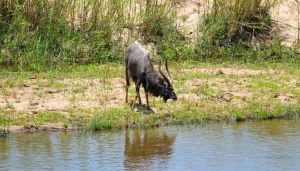
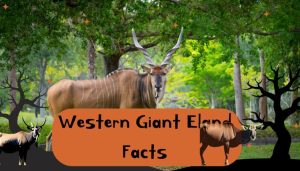

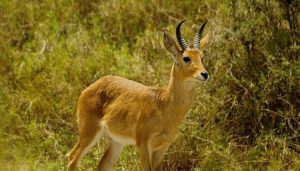
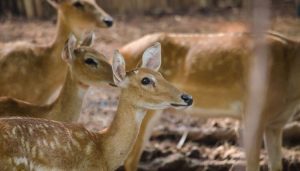
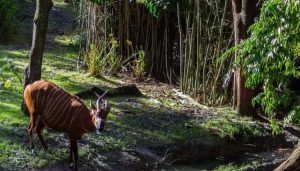
Leave a Reply